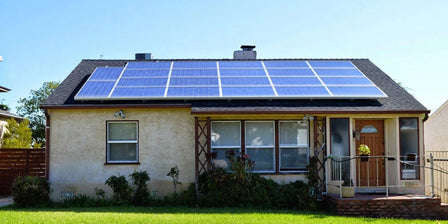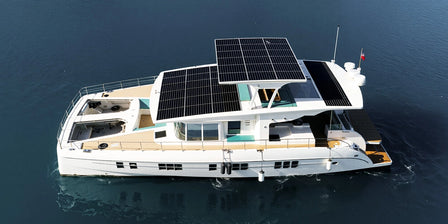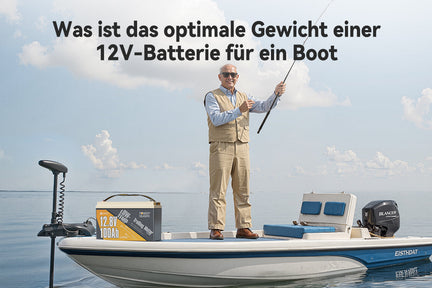Storage of LIFEPO4 batteries: a guide to correct handling and storage
Proper storage is crucial to ensure the longevity of LiFePO4 batteries and avoid potential hazards. Lithium iron phosphate batteries are used in many applications due to their high energy density, lightweight design, and environmental friendliness. compared to conventional lead-acid batteries increasingly popular. However, to optimize their benefits, it is important to understand how to store them properly.
This article provides important details on the proper storage and handling of LiFePO4 batteriesto extend their lifespan.

Why is proper storage of lithium-ion and LiFePO4 batteries important?
Even when disconnected from external devices, batteries can experience internal chemical reactions over time. LiFePO4 batteries require fewer safety precautions than lithium-ion batteries because they use stable iron compounds that don't produce hazardous gases or explode. Nevertheless, they are a significant investment, and proper storage ensures your investment isn't wasted.
How do you store LiFePO4 batteries?
The intended storage duration is a crucial factor influencing the storage of LiFePO4 batteries. Here are some important techniques for storing these batteries:
- Turn off: Most manufacturers recommend turning off lithium batteries before storage. Motorhomes and caravans it is necessary to disconnect the [+] and [-] cables connected to the battery terminals.
- Avoid heat sources: Keep lithium batteries away from heat sources, radiators, or other sources of heat. These batteries contain chemicals that can overheat and explode at high temperatures.
- Dry storage: Ensure the battery is stored in a dry place, free from leaks and corrosive gases. The storage temperature range for LiFePO4 batteries should be -20℃ to 35℃/-4℉ to 95℉.
- Short-term storage: When storing LiFePO4 batteries for short periods, charge them to at least 50% of their maximum capacity and store them in a dry location. The ideal temperature range for short-term storage is 10℃ to 30℃/50℉ to 86℉.
- Long-term storage: To maintain the health of LiFePO4 batteries during long-term storage, keep them at freezing temperatures. It's important to consider the battery's self-discharge rate, and it's recommended to charge the battery to 40% to 50% of its capacity before storage.
Ideal storage temperature for LiFePO4 batteries
The ideal temperature range for storing LiFePO4 batteries depends on the storage time:
Less than 30 days: -20℃ to 60℃/-4℉ to 140℉
30 to 90 days: -10℃ to 35℃/14℉ to 95℉
More than 90 days: 15℃ to 35℃/59℉ to 95℉
Storing LiFePO4 batteries in hot or cold weather
Avoid storing LiFePO4 batteries in extremely hot temperatures or in direct sunlight, as this can cause internal overheating and lead to voltage drops or battery fires. extremely low temperatures While they slow down the internal chemical reactions within the battery, very low temperatures can cause some battery components, such as the plastic casing, to break.

Frequently asked questions about storing LiFePO4 batteries
1.Should LiFePO4 batteries be disconnected from the system when not in use?
Yes, we recommend disconnecting the LiFePO4 battery system from the device when not in use. Simply turning off the main switch is not sufficient. We recommend disconnecting the battery cable from the terminal before storing the battery.
If the battery remains connected even when idle, there is still a small amount of power loss, which can negatively impact the battery's health or the device connected to it. Some components, such as sensors, often bypass the main circuit breaker.
2. Does a LiFePO4 battery need to be fully charged before storage?
It is not necessary to fully charge a LiFePO4 battery before storage, as storing a battery at 100% charge for extended periods can compromise battery health. It is recommended to charge the battery to 50% capacity before storage.
3.How long can a LiFePO4 battery be stored?
LiFePO4 batteries can be safely stored for up to one year without significant degradation, provided they are stored under the appropriate conditions mentioned above and their voltage is checked regularly. LiFePO4 batteries have a low self-discharge rate and can retain most of their charge capacity during storage. It is recommended to recharge them every three months if stored for longer than three months.
Conclusion
Compared to other lithium-ion or sealed Unlike lead-acid batteries, LiFePO4 batteries have a lower self-discharge rate and are easier to store. However, proper storage is crucial to maintaining their health and longevity. While the chemical composition of these batteries is flexible, the physical components remain vulnerable to environmental influences.
Compliance with the above guidelines is sufficient to properly store most lithium-ion batteries, especially LiFePO4 batteries. Finally, purchasing high-quality batteries such as those from the extensive catalog of Power Queen ensures that the storage process is more comfortable and comes with a 5-year warranty.




























